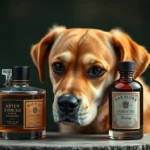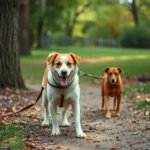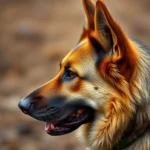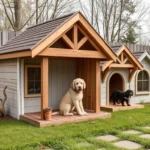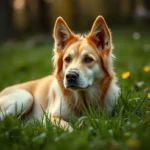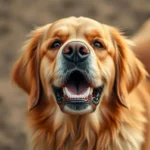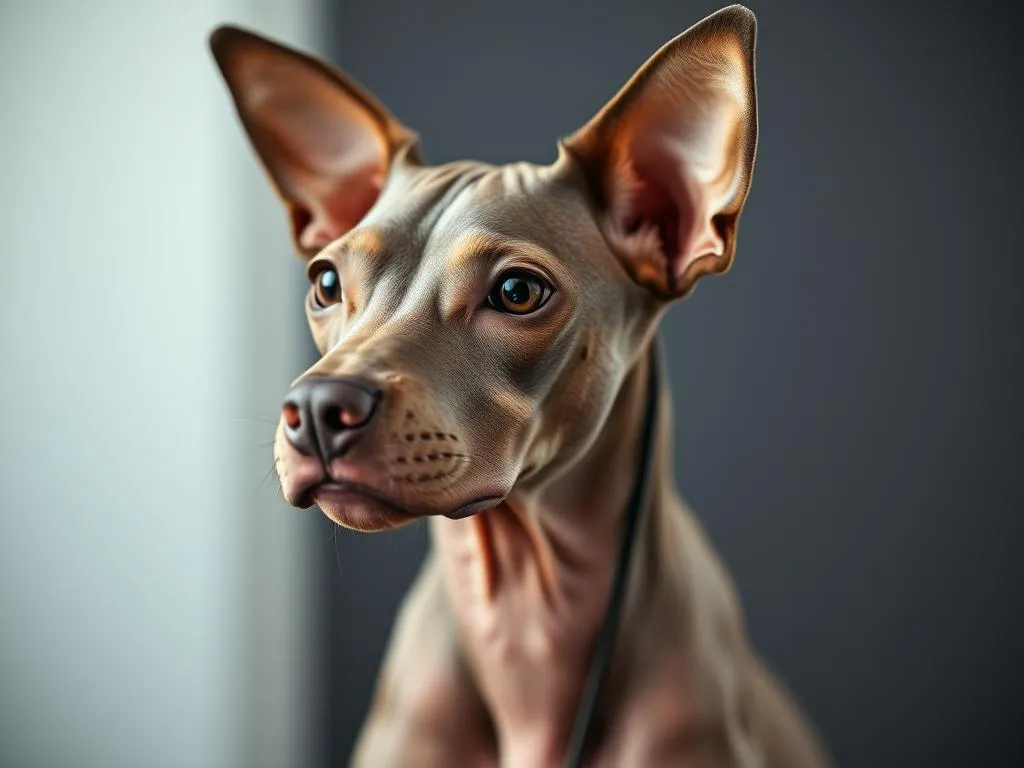
Hairless dog breeds have gained popularity for their unique appearance and personality traits. These charming companions not only stand out in a crowd but also come with distinct lifestyle needs that prospective owners should understand. In this guide, we will delve into the fascinating world of hairless dog breeds, covering their characteristics, care requirements, and lifestyle considerations to help you determine if one of these breeds is the right fit for your home.
What Are Hairless Dog Breeds?
Hairless dog breeds are canines that possess little to no fur. This unique trait is often the result of specific genetic mutations that have been selectively bred over generations. Throughout history, various cultures have embraced hairless dogs, attributing them with mystical qualities or considering them as symbols of wealth and status.
A Brief History
Historically, hairless breeds can be traced back to ancient civilizations. The Xoloitzcuintli, for instance, was revered by the Aztecs and considered a sacred companion, believed to guide souls in the afterlife. Similarly, the Chinese Crested has roots in China, where it was favored by sailors for its ability to keep rodents at bay on ships. Despite their long-standing presence in human culture, misconceptions about these breeds still persist.
Common Misconceptions
One frequent misconception is that hairless dogs are entirely hypoallergenic. While they may produce fewer allergens due to reduced shedding, they still require regular grooming and care to manage skin oils and dander. Another myth is that hairless breeds require less maintenance; in reality, they often require specialized skin care routines to prevent irritation and sunburn.
Popular Hairless Dog Breeds
Several hairless dog breeds stand out due to their unique characteristics and personalities. Here are some of the most popular ones:
American Hairless Terrier
The American Hairless Terrier is a small, energetic breed known for its playful demeanor.
- Characteristics and Temperament: This breed is friendly, intelligent, and eager to please, making it an excellent companion for families.
- Size and Weight: Typically, they weigh between 10 to 16 pounds.
- Lifespan and Health Considerations: With a lifespan of 12 to 16 years, they can be prone to skin issues and dental problems, necessitating regular vet check-ups.
Chinese Crested
The Chinese Crested is perhaps one of the most recognizable hairless breeds due to its distinctive appearance.
- Characteristics and Temperament: They are affectionate and often form strong bonds with their owners, displaying a playful yet gentle nature.
- Size and Weight: Generally, they weigh between 8 to 12 pounds.
- Lifespan and Health Considerations: Their lifespan ranges from 13 to 18 years, but they may experience dental problems and skin allergies.
Xoloitzcuintli (Mexican Hairless Dog)
The Xoloitzcuintli, or Xolo, is an ancient breed with a rich history.
- Characteristics and Temperament: Known for their calm demeanor, Xolos are loyal and protective, making them excellent family pets.
- Size and Weight: This breed comes in three sizes: toy (10-14 pounds), miniature (15-30 pounds), and standard (30-55 pounds).
- Lifespan and Health Considerations: Xolos can live for 12 to 15 years but may face health issues like skin conditions and orthopedic problems.
Peruvian Inca Orchid
The Peruvian Inca Orchid is a rare breed known for its elegance and grace.
- Characteristics and Temperament: These dogs are affectionate and intelligent, often forming strong attachments to their families.
- Size and Weight: They typically weigh between 25 to 55 pounds, depending on size classification (small, medium, large).
- Lifespan and Health Considerations: This breed can live up to 12-15 years, with potential skin and dental issues.
Other Notable Breeds
Beyond the well-known breeds, there are other hairless dog breeds worth mentioning, such as the Bald Tereré and Khala, both of which possess unique traits and personalities that charm their owners.
Lifestyle Considerations for Hairless Dog Breeds
Owning a hairless dog comes with specific lifestyle considerations that are essential for their well-being.
Skin Care
Due to their lack of fur, hairless dogs are prone to skin issues and require a dedicated skincare routine.
- Importance of Skincare Routines: Regular bathing and moisturizing are crucial for preventing dryness and irritation.
- Recommended Products: Use gentle, fragrance-free moisturizers and sunscreen formulated for pets, especially during sunny days.
- Common Skin Issues: Be on the lookout for rashes, sunburn, and acne, and consult a vet if any issues arise.
Temperature Sensitivity
Hairless dog breeds are sensitive to temperature extremes, requiring careful management of their environment.
- Hot Weather: Ensure they have access to shade and water during hot days, and consider dog clothing to protect their skin from sunburn.
- Cold Weather: Hairless breeds may need sweaters or jackets in colder climates, as they can easily get chilly.
Diet and Nutrition
A balanced diet is essential for the health of any dog, but hairless breeds have specific dietary needs.
- Dietary Needs: High-quality, grain-free dog food is often recommended to maintain a healthy coat and skin.
- Recommended Food Types and Brands: Look for brands that emphasize natural ingredients and avoid fillers.
- Maintaining a Healthy Weight: Regularly monitor their weight, as obesity can lead to additional health issues.
Exercise Needs
Regular exercise is vital for the physical and mental well-being of hairless dog breeds.
- General Exercise Requirements: Aim for at least 30 minutes of activity daily, including walks and playtime.
- Fun Activities and Games: Engage them with toys, agility courses, or fetch games to keep them entertained.
- Importance of Socialization: Introduce them to other pets and people early on to promote well-adjusted behavior.
Training and Socialization
Training and socialization are crucial for the development of a well-mannered hairless dog.
Basic Training Tips
Effective training methods can help establish a strong bond with your hairless dog.
- Effective Training Methods: Use positive reinforcement techniques, like treats and praise, to encourage good behavior.
- Importance of Positive Reinforcement: Reward-based training fosters trust and encourages a willingness to learn.
Socialization Techniques
Socialization plays a key role in helping hairless dogs become well-rounded companions.
- How to Socialize Hairless Dogs: Expose them to new experiences, people, and other animals in controlled environments.
- Importance of Early Socialization: Early exposure can prevent behavioral issues and promote confidence.
Dealing with Behavioral Issues
Like any breed, hairless dog breeds can exhibit behavioral problems that require attention.
- Common Behavioral Problems: Issues like separation anxiety, barking, or digging can occur.
- Strategies for Addressing and Correcting Behaviors: Implement consistent training routines and consider professional help if needed.
Health Considerations for Hairless Dogs
Owning a hairless dog means being aware of their specific health needs.
Common Health Issues
Hairless breeds can be prone to certain health problems, including:
- Skin Conditions: Allergies, sunburns, and acne are common.
- Dental Issues: Regular dental care is necessary, as they may be prone to dental problems.
Regular Veterinary Care
Routine veterinary visits are essential for maintaining the health of your hairless dog.
- Importance of Routine Check-Ups: Regular exams help catch health issues early.
- Vaccination Schedules and Preventive Care: Follow your vet’s recommendations for vaccinations and preventive treatments.
Lifespan and Aging
Understanding the lifespan and aging needs of hairless dog breeds helps in planning their care.
- Average Lifespan: Hairless breeds typically live between 12 to 18 years, depending on the breed.
- Special Care Considerations for Senior Hairless Dogs: Adjust their diet, exercise, and care routines as they age.
Grooming and Maintenance
Grooming is a critical aspect of caring for hairless dog breeds.
Grooming Needs
Hairless dogs require specific grooming practices to maintain their skin health.
- Grooming Practices: Regular baths are essential, and use moisturizing shampoos to prevent skin dryness.
- Bathing Frequency and Techniques: Aim for a bath every 1-2 weeks, depending on their activity level.
Nail Care
Nail trimming is an important part of grooming that should not be overlooked.
- Importance of Regular Nail Trimming: Keeping nails short prevents discomfort and injury.
- Tools and Methods for Nail Care: Use dog-specific nail clippers or grinders for safe trimming.
Ear and Dental Care
Maintaining ear and dental health is vital for hairless breeds.
- Cleaning Routines for Ears and Teeth: Regularly check ears for debris and clean teeth using dog-safe toothpaste.
- Recommended Products for Dental Health: Consider dental chews and toys that promote oral hygiene.
Pros and Cons of Owning a Hairless Dog
Before deciding to bring a hairless dog into your home, it’s essential to weigh the advantages and disadvantages.
Advantages
- Unique Appearance and Personality Traits: Hairless breeds often have striking looks and affectionate natures that can be endearing.
- Low Shedding and Hypoallergenic Qualities: Ideal for those who suffer from allergies or dislike shedding.
Disadvantages
- Higher Maintenance Requirements: They demand more grooming and skin care than fur-covered breeds.
- Potential Health Issues and Costs: Be prepared for potential health problems that may arise, which can lead to increased veterinary costs.
Conclusion
In summary, hairless dog breeds offer unique companionship and joys, but they also come with specific lifestyle needs that require thoughtful consideration. From skincare to exercise and training, understanding these aspects is essential for providing a loving and supportive environment for your dog. If you are ready to embrace the responsibilities that come with owning a hairless breed, you may find yourself with a loyal and affectionate companion that stands out in every way.
By taking the time to research and prepare for the unique needs of hairless dog breeds, you can ensure a happy, healthy life for your new furry friend.

